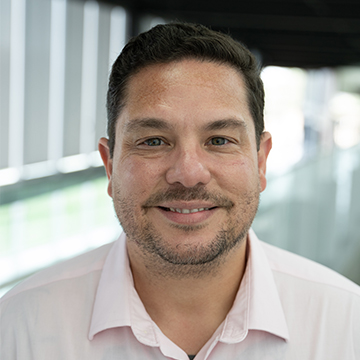Professional Summary
Dr. Mark Jaime is an Associate Professor of Psychology and Director of the Social Neuroscience Lab at Indiana University Columbus, which he founded in 2015 as the first psychology and neuroscience lab on campus. His research focuses on social perception, exploring how people detect, interpret, and respond to facial expressions, body movements, and other nonverbal cues. By studying subtle micro-movements, he investigates how these signals shape social interactions and contribute to social challenges in neurodiverse populations. His work integrates psychology, neuroscience, and AI-driven motion analysis to uncover the mechanisms behind human social behavior and communication. Beyond research, Dr. Jaime is passionate about mentoring undergraduate students and providing them with hands-on research experiences.
Education
- B.A., M.S., & Ph.D. in Psychology, Florida International University
- Postdoctoral Fellowship, University of Miami
- Postdoctoral Fellowship, Dalhousie University
Courses Taught
- PSY B-320 Behavioral Neuroscience
- PSY B-340 Cognition
- PSY B-334 Perception
- PSY B-311 Research Methods
- PSY B-425 Capstone in Psychology
- PSY B-110 Introduction to Psychology
- PSY B-105 Psychology as a Biological Science
Awards & Activities
- Outstanding Full-Time Faculty Research, Scholarship, & Creativity Award, IUPUC, 2017
Publications
- Lewis GF, daSilva EB, Aghajani M, Date S, Jaime M. Level of autistic traits in neurotypical adults predicts kinematic idiosyncrasies in their biological movements. Frontiers in Integrative Neuroscience. 2024;18:1364249. PubMed Central PMCID: PMC11076762.
- Haputhanthri, D., Brihadiswaran, G., Gunathilaka, S., Meedeniya, D., Jayarathna, S., Jaime, M., & Harshaw, C. (2020). Integration of facial thermography in EEG-based classification of ASD. International Journal of Automation and Computing. https://doi.org/10.1007/s11633-020-1231-6
- Jaime, M. (2019). EEG connectivity during social engagement in autism. In F. Volkmar (Ed.), Encyclopedia of Autism Spectrum Disorders. Springer. New York, NY.
- Jayarathna, S., Jayawardana, Y., Jaime, M. & Thapaliya, S. (2019). Electroencephalogram (EEG) for delineating objective measure of autism spectrum disorder. In C. Chen and S. S. Cheung (Eds.), Computational models for biomedical reasoning and problem solving (pp. 34-65). IGI Global. Hershey, PA.
- Jaime, M., O’Driscoll, K., & Moore, C. (2016) Visual discrimination of delayed self-generated movement reveals the temporal limit of proprioceptive-visual intermodal integration. Consciousness & Cognition, 43, 27-37.
- Jaime, M., McMahon, C. M., Davidson, B. C., Newell, L. C., Mundy, P. C., & Henderson, H. A. (2016). Brief report: Reduced temporal-central alpha EEG coherence during joint attention perception in adolescents with autism spectrum disorder. Journal of Autism and Developmental Disorders, 46, 1477-1489.
- McMahon, C. M., Henderson, H. A., Newell, L., Jaime, M., & Mundy, P. (2015). Metacognitive awareness of facial affect in higher-functioning children and adolescents with autism spectrum disorder. Journal of Autism and Developmental Disorders, 46, 882-898.
- Jaime, M., Longard, J., & Moore, C. (2014). Developmental changes in the visual-proprioceptive integration threshold of children. Journal of Experimental Child Psychology, 125, 1-12.
- Hileman, C., Henderson, H., Mundy, P., Newell, L., & Jaime, M. (2011). Developmental and individual differences on the P1 and N170 ERP components in children with and without autism. Developmental Neuropsychology, 36, 214-236.
- Jaime, M., Bahrick, L., & Lickliter, R. (2010). The critical role of temporal synchrony in the salience of intersensory redundancy during prenatal development. Infancy, 15, 1-22.
- Jaime, M., Lopez, J. P., & Lickliter, R. (2009). Bobwhite quail (Colinus virginianus) hatchlings track the direction of human gaze. Animal Cognition, 12, 559-565.
- Jaime, M. & Lickliter, R. (2006). Prenatal exposure to temporal and spatial stimulus properties affects postnatal responsiveness to spatial contiguity in bobwhite quail chicks. Developmental Psychobiology, 48, 233-242.
